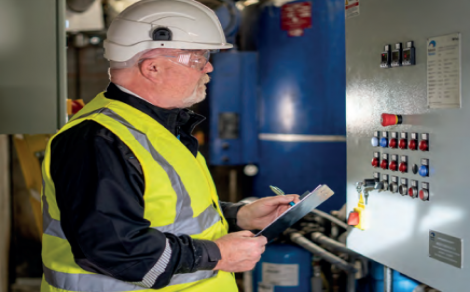Health, safety and heat transfer systems

In hard-to-reach areas, thermal imaging can be used to assess the condition of the system or reveal leaks that might be invisible to the naked eye. It can also reduce the risks of monitoring hot, running equipment because it’s possible to monitor from a safe distance
Knowledgeable staff
Providing specialist thermal fluid training, including system checks, thermal fluid maintenance, safe handling and storage practices, can ensure that employees are aware of compliance criteria. Workers should also know where to access spill kits and personal protective equipment (PPE) and who to call if their system goes down.
Incorporating health and safety measures into a preventative maintenance programme helps ensure compliance with regulatory guidelines. Thermal fluid specialists can deliver comprehensive support, offering access to an extensive range of thermal fluids for immediate dispatch, as well as specialised training and essential documentation for safe operations. With regular monitoring and proactive maintenance, a heat transfer fluid can safely operate for many years, although maybe not quite as long the Isle of Man tramcars.
For more advice on DSEAR and UKEX compliance please visit: www.globalhtf.com
https://twitter.com/G_HeatTransfer
https://www.linkedin.com/company/heattransferfluid/
-
SMART Manufacturing & Engineering Week
04 - 05 June, 2025
NEC, Birmingham UK -
PPMA 2025
23 September, 2025, 9:30 - 25 September, 2025, 16:00
NEC, Birmingham UK -
Advanced Engineering Show 2025
29 October, 2025, 9:00 - 30 October, 2025, 16:00
NEC, Birmingham UK










